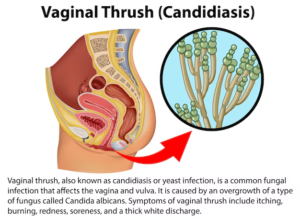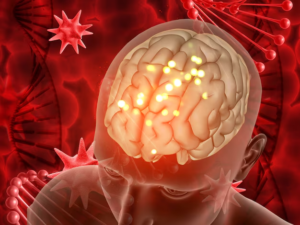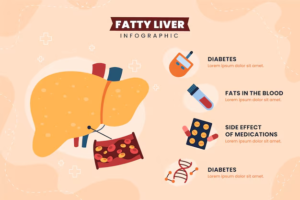Understanding Dyspraxia and the Role of Ayurveda in Its Management
Introduction
Understanding Dyspraxia and the Role of Ayurveda in Its Management, also known as developmental coordination disorder (DCD), is a neurological condition that affects motor skill development. It can impact an individual’s ability to perform everyday tasks, leading to challenges in coordination, planning, and executing movements. While traditional treatments often focus on physical and occupational therapies, there is growing interest in alternative approaches, such as Ayurveda. This ancient system of medicine from India offers a holistic perspective on health and wellness, emphasizing balance and harmony within the body.
In this blog, we will explore dyspraxia, its symptoms, causes, and how Ayurveda can be integrated into its management. We will discuss Ayurvedic principles, dietary recommendations, herbal remedies, and lifestyle modifications that may support individuals with dyspraxia.
Understanding Dyprxia

Symptoms
Dyspraxia manifests differently in each individual but commonly includes:
- Poor Coordination: Difficulty with tasks that require fine or gross motor skills, such as writing, tying shoelaces, or playing sports.
- Clumsiness: Frequent trips, falls, or bumping into objects.
- Difficulty with Planning and Organization: Challenges in following multi-step instructions or organizing tasks.
- Speech Difficulties: Trouble articulating words or managing the rhythm and pace of speech.
- Social Challenges: Difficulty in understanding social cues, which may lead to isolation or anxiety.
Causes
The exact cause of dyspraxia is not well understood, but it is believed to result from a combination of genetic, neurological, and environmental factors. It often occurs alongside other conditions, such as ADHD, dyslexia, and anxiety disorders.
Ayurvedic Perspective
Ayurveda, which translates to “the science of life,” aims to promote a balanced lifestyle through diet, herbs, yoga, and mindfulness. It is based on the belief that health is a result of the balance between the mind, body, and spirit.
Doshas and Dyspraxia
In Ayurveda, individuals are categorized into three doshas: Vata, Pitta, and Kapha. Each dosha represents different physical and emotional characteristics. Dyspraxia may be associated with an imbalance in the Vata dosha, which governs movement, coordination, and communication.
- Vata Imbalance: Excess Vata can lead to anxiety, restlessness, and difficulties in motor coordination. Symptoms may include dryness, irregularity, and instability.
Ayurvedic Treatments for Dyspraxia
1. Dietary Recommendations
Diet plays a crucial role in balancing the doshas. For individuals with dyspraxia, a diet that pacifies Vata may be beneficial. Consider the following dietary suggestions:
- Warm and Nourishing Foods: Include soups, stews, and warm cereals to provide grounding and stability. Avoid cold, dry, and raw foods that can aggravate Vata.
- Healthy Fats: Incorporate ghee, olive oil, and avocados, which can help lubricate the body and support brain function.
- Hydration: Drink plenty of warm fluids, such as herbal teas or warm water, to maintain hydration and support digestion.
- Sweet and Grounding Flavors: Favor sweet, sour, and salty tastes while minimizing bitter and astringent flavors, which can increase Vata.
2. Herbal Remedies
Ayurveda offers various herbs known to support cognitive function, coordination, and overall well-being. Some herbs that may be beneficial include:
- Ashwagandha: Known for its adaptogenic properties, ashwagandha can help reduce anxiety and improve focus, making it easier to manage coordination challenges.
- Brahmi: This herb is revered for its cognitive-enhancing properties, promoting clarity of thought and improving memory.
- Ginger: Ginger can help with digestion and circulation, which may support overall physical coordination.
- Turmeric: With its anti-inflammatory properties, turmeric can aid in reducing inflammation and promoting overall health.
Before using herbal remedies, it’s essential to consult an Ayurvedic practitioner or healthcare provider.
3. Lifestyle Modifications
Incorporating specific lifestyle changes can greatly enhance the well-being of individuals with dyspraxia:
- Yoga and Physical Activity: Gentle yoga practices can improve coordination, balance, and flexibility. Poses like tree pose, warrior pose, and child’s pose can be beneficial.
- Mindfulness and Meditation: Practicing mindfulness techniques can help reduce anxiety and improve focus. Simple breathing exercises or guided meditations can be integrated into daily routines.
- Routine Establishment: Creating a structured daily routine can help individuals manage tasks more effectively, promoting a sense of control and stability.
Integrating Ayurveda with Conventional Treatments
It’s essential to remember that Ayurveda can complement traditional therapies rather than replace them. A holistic approach can provide a more rounded treatment plan for managing dyspraxia. Collaboration with healthcare providers, including occupational and physical therapists, can ensure that individuals receive the best care tailored to their needs.
Conclusion
Dyspraxia can significantly impact daily life, but understanding and managing the condition holistically can provide relief and improved quality of life. Ayurveda offers valuable insights and practices that can support individuals with dyspraxia by addressing imbalances within the body and mind.
By embracing dietary adjustments, herbal remedies, and lifestyle modifications, individuals may find a path toward better coordination, reduced anxiety, and enhanced overall well-being. Always consult with healthcare professionals before starting any new treatment plan to ensure safety and effectiveness.
As awareness of dyspraxia continues to grow, integrating Ayurvedic principles into conventional treatment methods may pave the way for more comprehensive and effective management strategies, ultimately empowering individuals to navigate the challenges of dyspraxia with greater confidence and ease.








Leave a reply